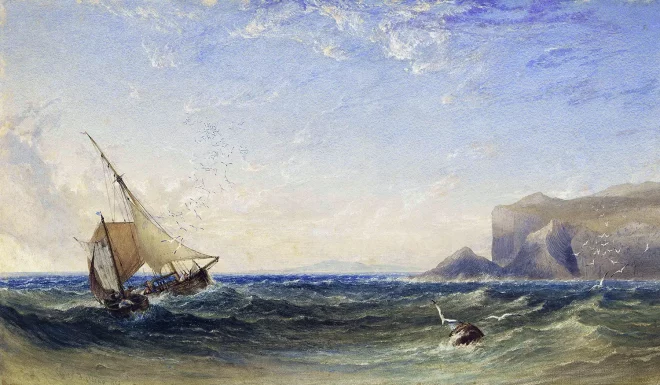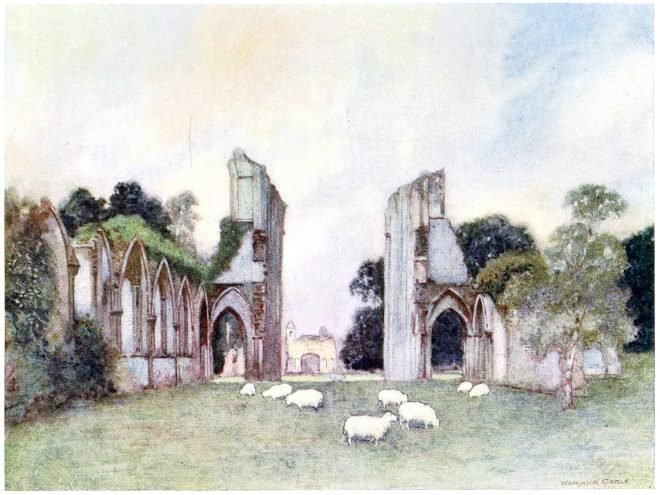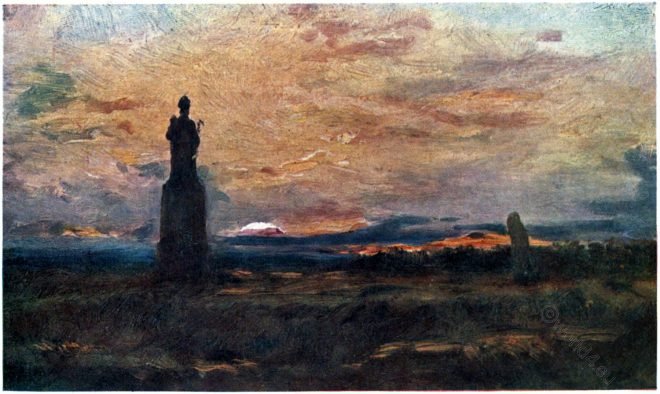The ancient Gaelic name of Iona was unis nan Druineach, the Isle of the Druids. The Westminster Abbey of Scotland.
Category: 6th Century
Glastonbury Abbey in the county of Somerset, England.
The memories of the British Inyswytryn, the Saxon Glaestingburge, the modern Glastonbury, or as it was sometimes called the isle of Avalon
Monasteries and Cloisters as Centres of learning and Culture.
The history of monasticism reveals the fact that In every field of thought and activity this institution wrought good and evil.
Anglo Saxon ornaments. Fibula, Pendant, Pin and Buckle.
Fibula of gold and bronze. Pendant or bulla of gold. Pin and Buckle of of bronze. Discovered at Wingham, near Canterbury, in 1843.
Hunting scene of Sassanian Fabrics of the Middle Ages.
During the reign of the Sassanids, who ruled the Neo-Persian Empire from 250-650 AD and were distinguished by their love of luxury, the arts, especially those of weaving, reached a high level of perfection.
Costumes of the Byzantine Middle Class. 400 A.D. – 1100 A.D.
Byzantine costume was the dress of the world after the fall of Rome.
Byzantium. Costumes of the Eastern Roman emperor and empress.
History of Costume. Byzantium. 400 – 1100 AD. Costumes of the Eastern Roman emperor and empress.
The Byzantine Ornament of Antiquity and the Middle Ages.
The Byzantine style of art. The Romanesque style. Marble mosaic work. Examples of flowing foliage. Ornamental forms of ancient Persepolis. Ornamentation of the Middle Ages.
Byzantine Art. Mural, paintings, mosaics, and paintings from manuscripts.
Marginal paintings. Paintings in St. Sophia. Mosaics from Palermo. Enameled border. Paintings at Constantinople.
Royal Crowns & Sceptre of the Frankish kings.
Crowns and scepters of the Merovingian and Carolingian Frankish kings in the Middle Ages.










